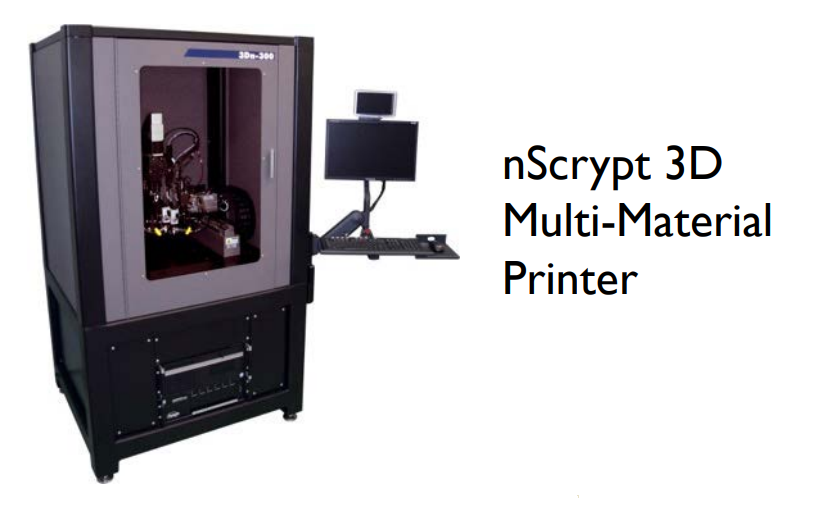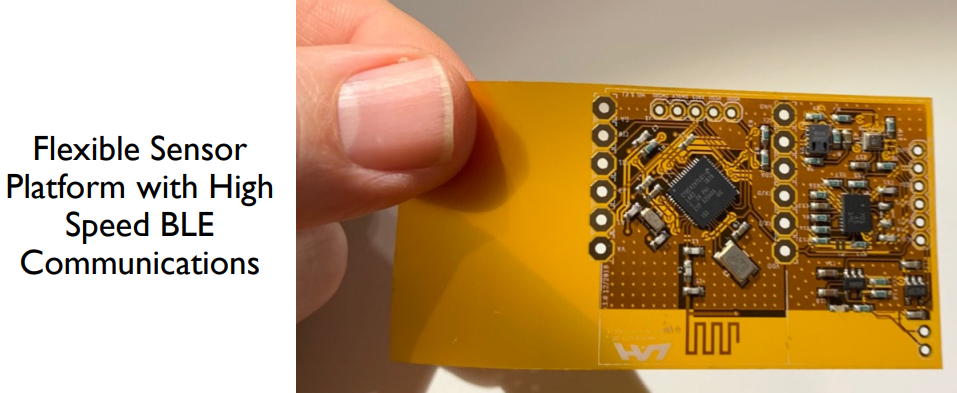NASA MSFC Materials & Process Development Offers Plan for New 3D Printing Materials & Hardware to Sustain Astronauts During Missions
Not surprisingly, NASA is working on new developments for space travel—partnering with Auburn University to create new sensing technology, materials for 3D printing in space, as well as new hardware and capacitors (devices used to store electricity).
In the latest from NASA MSFC Materials & Process Development, their goal is to create processes that can sustain production, recycling, and maintenance on-demand while astronauts are completing exploration missions.
Beginning with a variety of different sensing platforms, the Materials & Process Development document outlines plans for flexible sensing technology such as next-generation printed sensors and platforms to be used for monitoring the health of astronauts while at the International Space Station (ISS), along with the specific, unique materials and new processes to create such devices. The document also outlines the need for both assessing and integrating wireless communications and flexible parts.
For energy storage technology development, the following needs are outlined:
- Development for triboelectric power to create a self-sustained sensor system
- Completion of a completely printed supercapacitor
- Development of high energy density supercapacitors for battery replacement
- Realization of devices for scalable battery replacement applications
There are further plans to collaborate with other organizations and universities to create an In-Space Manufacturing Digital Design & Verification Database, along with another catalog of what parts and systems are to be created during missions. NASA also plans to create new laboratory methods such as:
- Ceramic powder processing – materials can be reduced and homogenized
- Vibratory Mill – using 3-axes grinding action
- Micro mill – fast grinding for low-volume batches, achieving < 50nm particle sizes
- Powder treatment – forming gas within a fluidized bed for creating dielectric properties for ultracapacitors
For particle size measurements in nanotechnology, NASA’s intention is to understand mean particle size and distribution aids in powder milling for uniform sizing. Along with that, sample preparation is vital to gathering proper data. They also plan on developing nano-inks through formulation with ceramic and metallic powders and additives, along with creating ‘thick film ink formulations’ with three-roll mills:
“Roller speed and spacing are both controllable and are key factors in the final product. Thin film inks require fewer additives (typically the powder material and a vehicle) and are used in direct write deposition systems. Therefore, lower viscosity is necessary, which can be achieved using a high-shear dispersion mixer.”
 For 3D printing, the nScrypt 3D multi-material printer is targeted as the hardware of choice, featuring:
For 3D printing, the nScrypt 3D multi-material printer is targeted as the hardware of choice, featuring:
- Four head capability
- SmartPump for inks
- Two nFD heads
- Pick and place head for electronics
- High precision printing at 300x300x150mm volume
The idea overall is to be creating a FabLab at the ISS, that will also include a direct current sintering furnace, for developing ultracapacitor and thermoelectric materials. There are also plans for development of both Perovskite Ultracapacitors (used to store energy, and test and charge instruments and devices) and Plasma Sintered (SPS) Supercapacitors (offering good potential for high energy density).
NASA has been using 3D printing for decades—long before anyone even knew what it was. In the past few years, however, as the technology has been launched into the mainstream with growing popularity, there have been numerous challenges where NASA encourages participants to compete in creating new 3D printing technology for the Moon and Mars, as well as space habitats and more. Researchers have studied different experimental filaments for use in space, as well as created devices for astronauts to test their own blood in space. Find out more regarding the latest in NASA developments here.
What do you think of this news? Let us know your thoughts! Join the discussion of this and other 3D printing topics at 3DPrintBoard.com.
[Source / Images: Auburn University Materials Engineering Department]Subscribe to Our Email Newsletter
Stay up-to-date on all the latest news from the 3D printing industry and receive information and offers from third party vendors.
Print Services
Upload your 3D Models and get them printed quickly and efficiently.
You May Also Like
3D Printing News Briefs, July 2, 2025: Copper Alloys, Defense Manufacturing, & More
We’re starting off with metals in today’s 3D Printing News Briefs, as Farsoon has unveiled a large-scale AM solution for copper alloys, and Meltio used its wire-laser metal solution to...
3DPOD 260: John Hart on VulcanForms, MIT, Desktop Metal and More
John Hart is a Professor at MIT; he´s also the director of the Laboratory for Manufacturing and Productivity as well as the director of the Center for Advanced Production Technologies....
3D Printing News Briefs, June 28, 2025: Defense Accelerator, Surgical Models, & More
In this weekend’s 3D Printing News Briefs, 3YOURMIND was selected to join an EU Defense Accelerator, and PTC has announced model-based definition (MBD) capabilities within Onshape. Finally, a study out...
EOS in India: AM’s Rising Star
EOS is doubling down on India. With a growing base of aerospace startups, new government policies, and a massive engineering workforce, India is quickly becoming one of the most important...




































